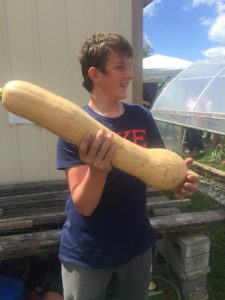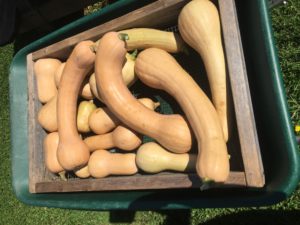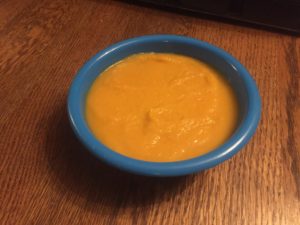ASD welcomed student volunteers from Abingdon High School last month to continue their garden education and service. This season, former E.B. Stanley Middle School students are now official freshmen and there are several other faces that are new. For our first session, the teens learned how to pick rattle snake preacher beans and pluck tender provider beans. They also learned how to spot the ever-hungry bean beetle. The compost pile was turned in the early spring by these volunteers and has since sprouted gorgeous mysterious squash vines.
Note: GYO’s demonstration garden site is directly beside Ecumenical Faith in Action (EFiA), which serves as a food pantry and provides various social services. Last fall, the staff of EFiA had discarded a box of butternut squash on the compost pile.
As the students continued to pick beans, some of the more enthusiastic students were pulling weeds and carting them over to the compost pile. Soon enough, a sweaty child comes back with a 3 foot long butternut-looking hard squash. Within moments of seeing the gigantic hard squash, the remainder of the weeding team were in the wild squash vines yanking out every squash they could get their hands on. Luckily, they were stopped before the rest of the unripened squash were pulled.
The session was over, but a wheel barrow of oddly shaped, butternut-colored, hard squash were ready to be washed and cured. Curious to know if the squash was edible, ASD staff took one of the biggest squash home to cure and then cook into soup. Turns out the squash was in fact, butternut in every way but the size.



Why is this bizarre? The family, Cucurbitaceae, hosts over 900 species including garden favorites like yellow squash and watermelon. These plant species have both male and female flowers which means that plants of different species can cross-breed. So, when these compost vines appeared the likelihood that the genetic material of the discarded butternut would produce true butternut was low if the original squash had been grown near other cucurbits. Harvesting these long neck butternut made for a joyous occasion for no one had truly worked to produce them other than Mother Nature and Father Time. For more information on saving cucurbit seed, click here.


Leave A Comment